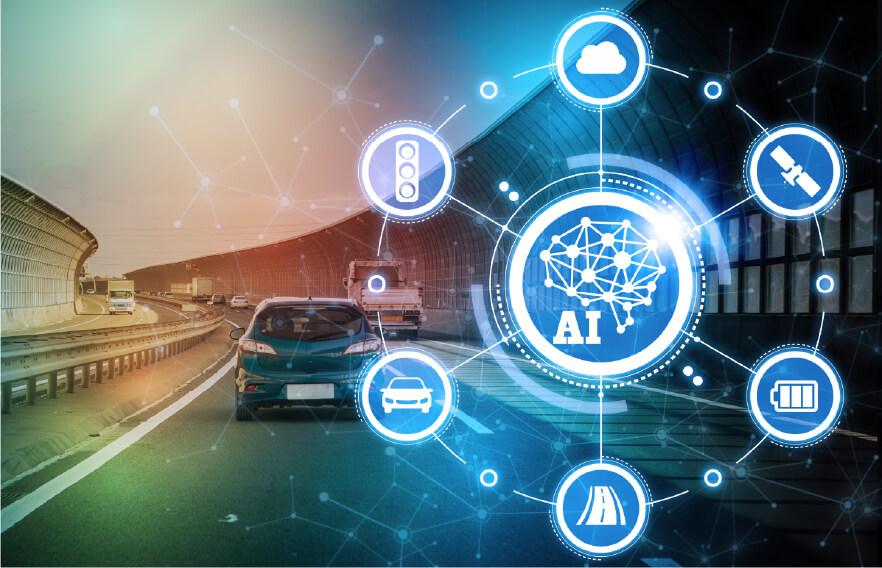The invention of the motorized vehicle has propelled humankind to greater heights with a compelling capacity to explore the plains and hills of the earth in the last 200 years. Today’s epoch in the technology, science, and analytics realms has given headway for the evolution of self-driving autonomous vehicles. This has also given vehicles the ability to make decisions that save passengers, pedestrians, and all other earthly beings’ lives during unforeseen situations on the road or accidents. This level of sophistication helps us get from point A to point B faster and safer than ever before.
However, the onset of powerful and faster vehicles has significantly increased the number and severity of accidents in recent years. According to Association for Safe International Road Travel, approximately 1.35 million people die in road crashes each year; on average, 3,700 people lose their lives every day on the road. An additional 20-50 million suffer non-fatal injuries, often resulting in long-term disabilities each year.

Source: https://morth.nic.in/sites/default/files/Road_Accidednt.pdf
The above graph reveals a consistent increase in road accidents in India, accident-related deaths, and injuries up to 2010, after which the number of accidents has saturated with marginal fluctuations. This saturation occurred because of implementing safety measures and systems that use data analytics and Artificial Intelligence, such as Anti-skid Braking System (ABS), installing vehicle movement surveillance cameras, and speed detection cameras.
In 2019, the number of accidents in India was about 449,002, which is a concerning figure. However, these trends have prompted transport authorities worldwide to work their socks off to mitigate road accidents and increase road safety.
Why do road accidents occur?
Several factors contribute to road accidents, injuries, and deaths, including:
- Poor road condition and management
- Unsafe condition of vehicles with compromised safety components
- Unenforced or non-existent traffic laws
- Unsafe road user behaviors
- Inadequate post-crash care
These concerning causes leave us with the need to improve traditional road safety measures, which is where advanced technologies like data analytics come into the picture. So let’s look at a few facets where data analytics and Artificial Intelligence (AI) helps in improving road safety.
Minimizing road accidents using Data Analytics
Identifying accident hotspots
Although road accidents can happen at any place and at any time owing to multiple factors, a thorough look into road accident data reveals that certain areas witness more road accidents than others. These are called ‘accident-prone zones’.
Using data analytics makes identifying these hotspots and taking necessary actions to mitigate accidents in these areas more efficient. Furthermore, this information benefits road safety authorities to implement safety measures like imposing speed restrictions and placing barricades, which invariably reduces the chances of accidents, thereby increasing road safety. This contributes to proactively mitigating road accidents using predictive analytics by identifying the accident-prone zones and when accidents will occur. The major challenge is to capture a vast amount of data. However, the gain from predictive analytics is enormous and can save lives.
Managing traffic flow
Increased vehicle volume and dense traffic flow are the main reasons for accidents in urban cities. With the use of data analytics, traffic management becomes organized and effective as the authorities use data analytics and AI for the following:
- To plan the duration of halt at signals and ensure seamless movement of traffic
- Regulate the speed at certain areas by installing speedbumps & speed detection cameras, especially in the motorways
- Identify spots to place speed limit signboards and
- Divert the vehicles to roads with less traffic to avoid congestion
Authorities can be alerted of defaulters who drive rashly or over the permissible speed by the speed detection cameras and possibly dock points from their vehicle insurance. These measures help the traffic flow during peak hours and reduce the chances of accidents.
Artificial Intelligence (AI) can be used in helping emergency vehicles reach their destination safely in a short period. However, as every minute counts in an emergency, these rescue vehicles often have difficulties making headway due to dense traffic in urban areas. In Germany, research and testing are ongoing, where AI is used to detect oncoming ambulances and other rescue vehicles using GPS and LTE mobile communication systems. This allows the vehicles to exchange information with the traffic infrastructure, which switches the traffic lights permitting the fire trucks and ambulances to go ahead without pausing at the signal when the stoplight appears and helps them reach their destination quicker and safer.
Supporting safety features in modern vehicles
According to a German telecom provider, an average modern vehicle generates around 25 gigabytes of data every hour, and autonomous cars generate even more – up to 3600 gigabytes of data per hour. These data include the information captured by the drivetrain sensors that propel the vehicle and data of the driver’s driving pattern, position, and movements of objects and people in the vehicle’s surroundings, condition of the road.
All this available information makes it possible to reduce accidents. It opens a window of opportunity for the automakers to develop safety features designed to protect the passengers and others on the roads. Some of the safety features in the market:
- Driver alert systems offer a way to reduce the likelihood that a drowsy or fatigued driver will cause an accident due to sluggish reactions or dozing off. These systems are designed using advanced analytics and artificial intelligence to detect the telltale signs of a drowsy or impaired driver and then provide an alert or take some corrective action
- Systems like Electronic brake distribution, Adaptive cruise control, Traction control, and Torque vectoring use the information generated by the sensors and react at crucial times to avoid accidents
- Dashcams are being deployed with AI to monitor drivers’ and driving behavior and track eye movements. This advanced technology helps detect intoxicated drivers and reacts by sending out warning messages or stalling the vehicle if necessary
Other Department Personnel related to Vehicles and Road Safety who use Data and Analytics are:
- Insurers – with the telematics data from the vehicle’s onboard diagnostics and information from the service and repair centers, insurers are working with AI tools to analyze the vehicle’s condition and set the appropriate insurance premium rate. The premium rates can therefore depend on the vehicle’s condition. If the condition is poor, it may be an imperative factor to cause accidents. Therefore, to keep the premium rate low, the insured person will invariably maintain the vehicle in good condition, leading to fewer accident scenarios
- Policy-makers – to set accident reduction targets, monitor the performance, and develop road safety action plans
- Police – to identify local accident-prone areas and monitor enforcements are followed
- Health sector – for resource planning, health promotion, and injury prevention interventions
- Research community – to publish studies that help reduce risks and crashes, to test and improve the road safety measures
- Prosecutors – to use data as evidence
Data analytics helps improve road safety proactively
Although the invention and evolution of motorized vehicles is one of the most incredible feats in human history, it has caused a significant amount of damage and loss to humans with the increase in road accidents in recent years.
However, with analytics and data-driven insights, it is possible to solve everyday problems and save countless lives with a modern approach.



